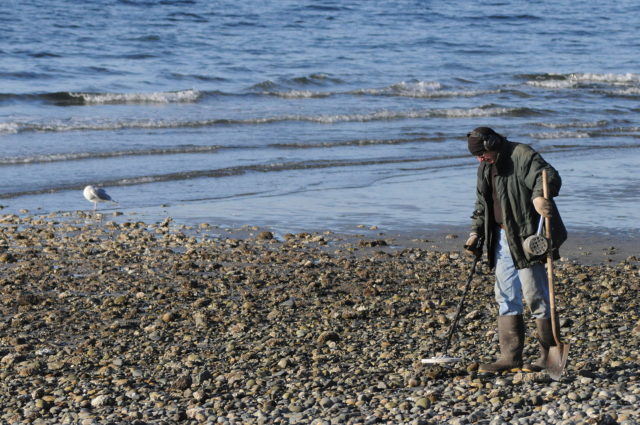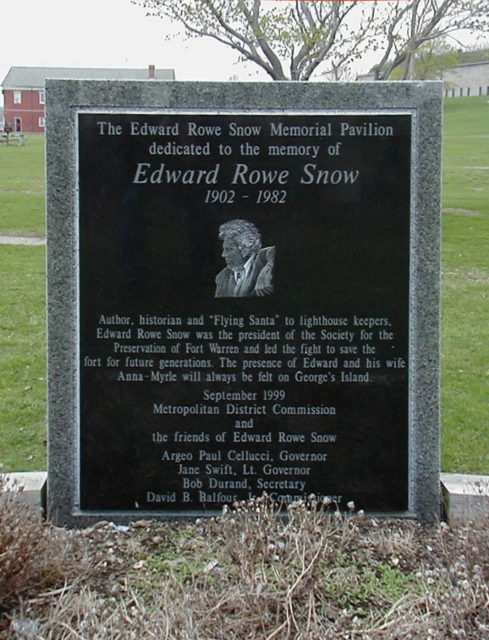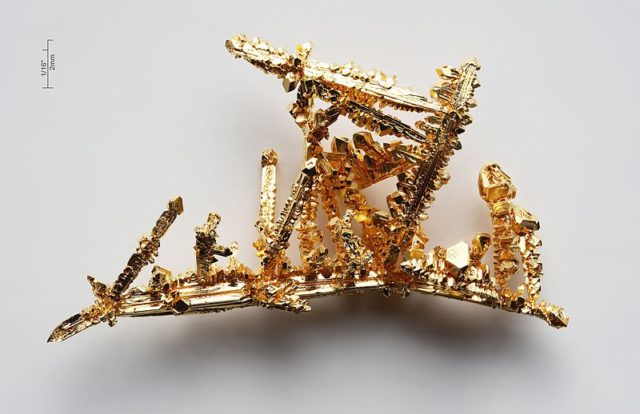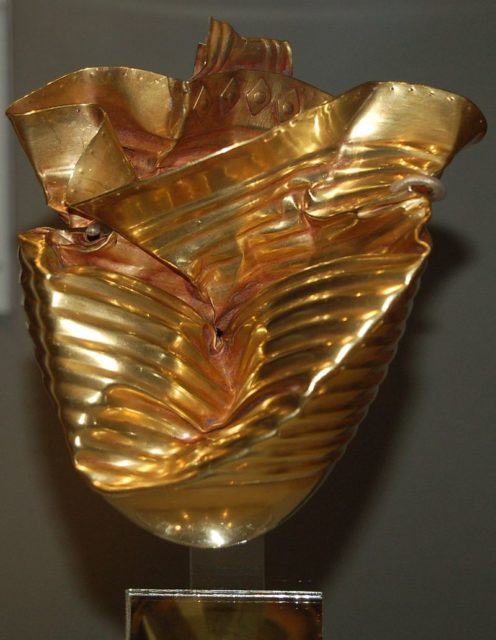Scouring the local parks and beaches has long been the hobby of avid researchers since metal detectors became available for public consumption.
The metal detectors may seem a very simple device, but history has it, often it produces a gain that far surpasses the fatigue of walking tirelessly in a hypnotic trance looking for artifacts. Following are five of the most notable items found by avid metal detectorists.
5.Cash in the Backyard

In the year 1946, amid all the chaos of War and uncertainty, a couple of professional postal inspectors went through the records of a dead post office employee and spotted a number of anomalies in the activities. There were enough loopholes in the archives to suggest some kind of suspicious activity, which eventually triggered an investigation into the matter. Postal inspectors had to approach the Army to borrow a metal detector to probe into the matter further by scouring the dead man’s garden. What they found intrigued them; there buried in the backyard was $153,150 pilfered cash stuffed in jars and cans and hidden within a stovepipe.
4.Hunt for Doubloons

In a real life ‘Treasure Island’ hunt, pirate specialist and maritime historian Edward Row Snow decided to venture into the unchartered territory in the hunt for a treasure based on a mysterious map. The expert metal detectorist was accompanied by another enthusiast, and they were equipped with a pair of the devices.
In 1952 the pair landed on a small patch of land near Nova Scotia, and started scouring the land informed by their map. Soon they came across a whole stash of 18th century Portuguese and Spanish doubloons along with the skeletons holding them. Nothing in this story was unlike your typical treasure hunting fairy-tale.
3.The Boot of Cortez

The year was 1989 and a prospector from Mexico, a resident of Senora, was trekking in a small desert testing out his newly bought metal detector. Ridiculed by his friends and family, he was determined to find gold. A week passed and all he could find in the rugged terrain was mostly old metal junk, however by the end of the week the prospector hit the jackpot and stumbled upon a massive 26.6-pound gold nugget. The news of the big gold nugget spread across Mexico like a wildfire and earned the name ‘Boot of Cortez’. The Boot of Cortez is in fact, so far, the biggest gold nugget discovered in the entire western hemisphere.
2.Ringlemere Gold Cup

Cliff Bradshaw lived an adventurous life as an amateur archaeologist with a passion and admiration for metal detectors. Despite the fact that Bradshaw retired as an electrician, he never stopped pursuing his hobbies of metal detection, and the day came when his efforts paid beyond his expectations.
In 2012, Cliff Bradshaw discovered the Ringlemere Gold cup, a Bronze Age vessel in the English county of Kent, which despite being damaged was in a good enough condition to be considered a significant find. The vessel is one of only seven such cups ever unearthed in the entirety of Europe that date back to the 16th and 18th century.
1.Not an Ordinary Can of Beer

Mike DeMar was on his usual drive off the coast of Key West in 2008 searching for little old scrap metal pieces, when he stumbled upon a piece of what he thought was garbage. It looked like a normal piece of a beer can that could have drifted from the nearby coast.
However, what he later found out surprised him and earned him a place amongst the reputed explorers. DeMar had accidentally stumbled upon a 386-year-old chalice that sank with Santa Margarita in 1622.
